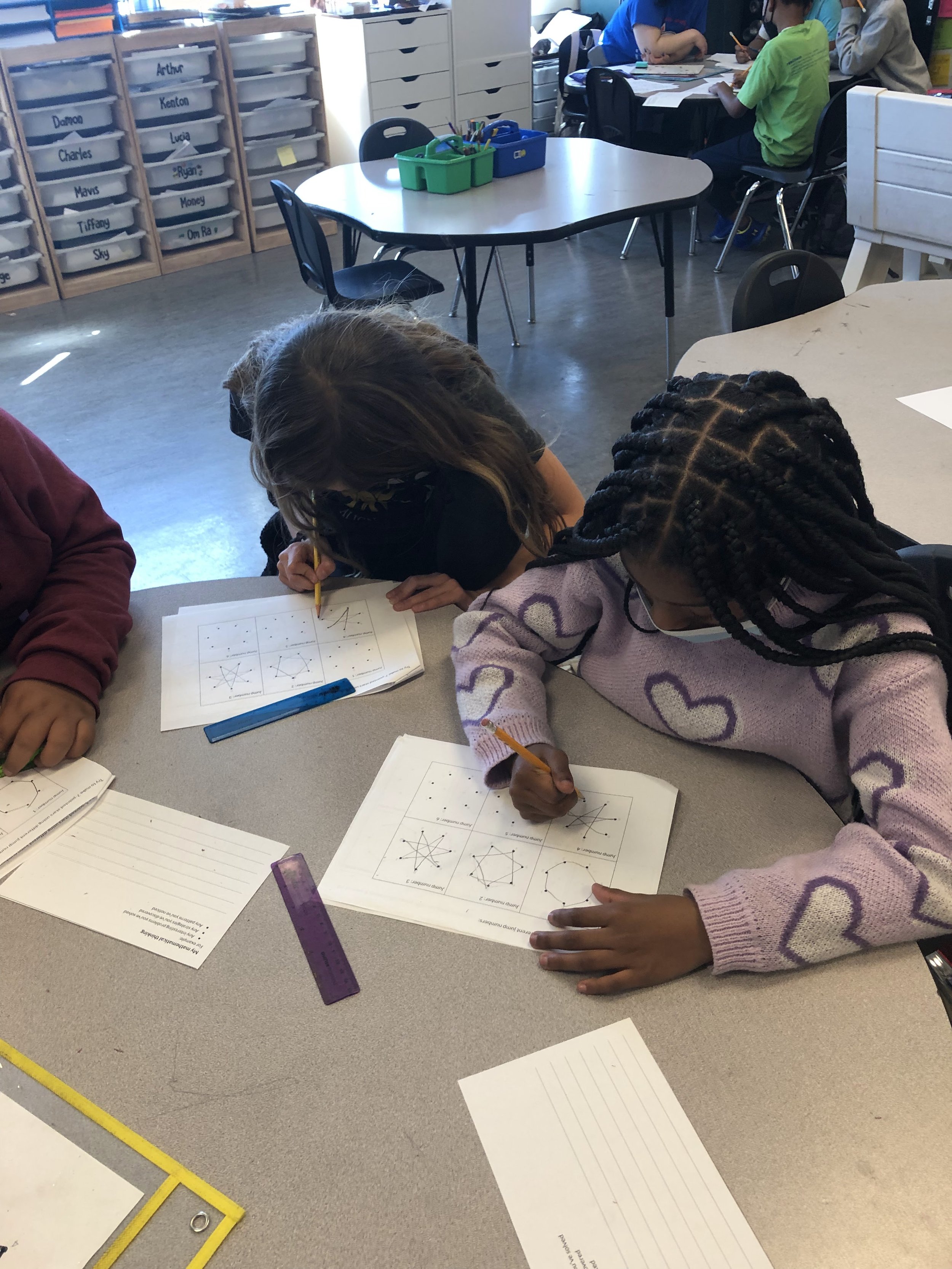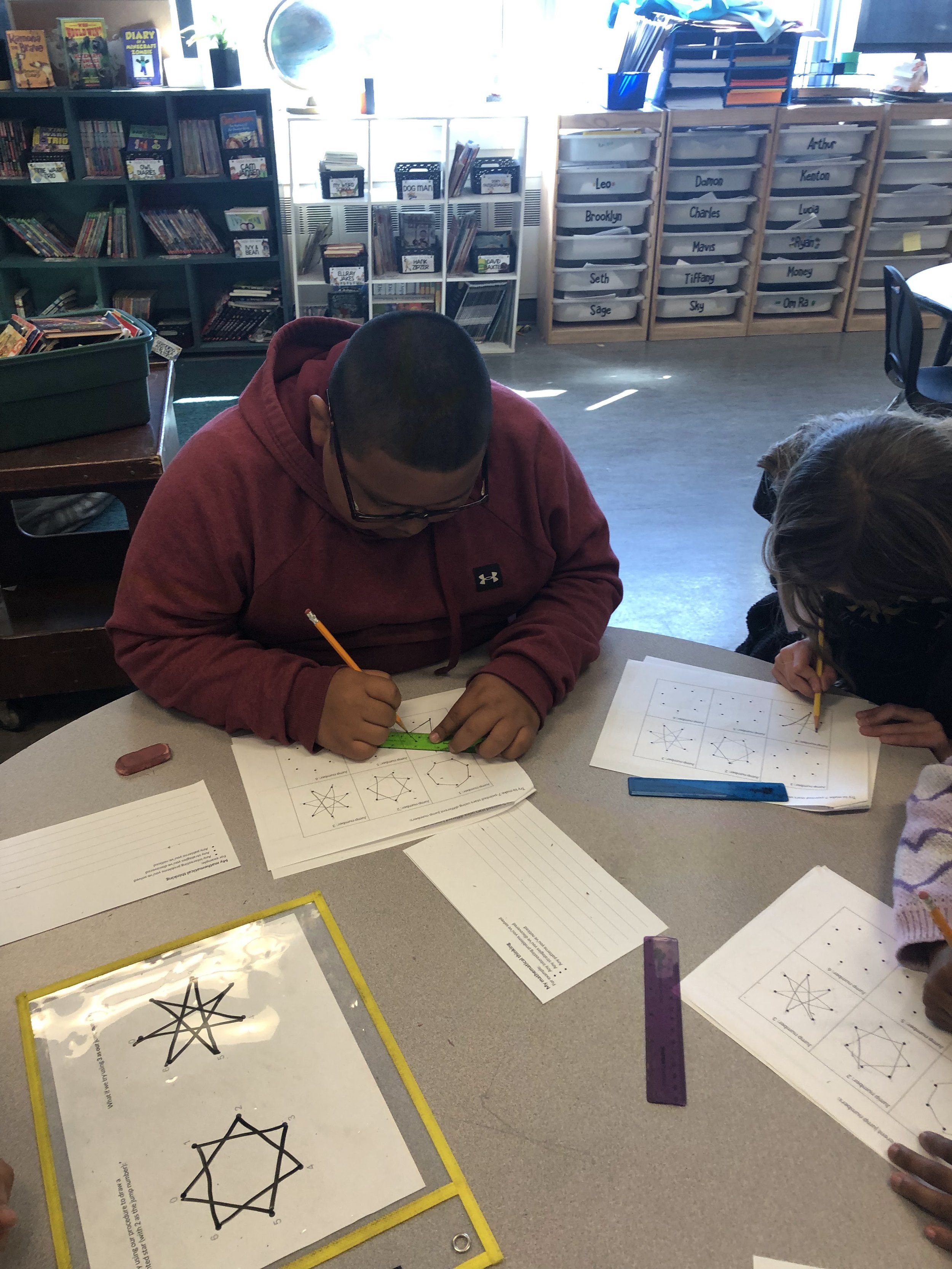Star Drawing
How it works
You probably know how to draw a 5-pointed star. But what about a 7-pointed star? Or a 12-pointed star? Or a 30-pointed star?
In this activity, students start by learning a general procedure that can be used to draw stars with any number of points, and they use this procedure to try to draw stars with specific numbers of points. In doing this, they discover that the stars produced by the procedure don’t always have the number of points they expect, and they explore when the procedure works and when it doesn't.
Star Drawing Procedure handout
Star Drawing (5-8 points) handout
Predictions (9-12 points) handout
Star Drawing (9-12 points) handout
Why we like this activity
- It’s fun! Students enjoy making and exploring stars.
- It helps to develop numerical reasoning.
It requires students to engage in mathematical habits of mind:
Using logic and understanding and explaining when determining when the procedure does and doesn't work as intended.
Finding and using strategies to draw stars with different numbers of points.
Using logic / looking for patterns / making and testing predictions / understanding and explaining when exploring the relationship between the number of dots, the number of dots you jump each time, and the star you end up with.
- It has a low floor and a high ceiling: Students can start making stars by following the procedure, but there are lots of interesting questions to explore about when the procedure actually gives you a star with the number of points you’re looking for and when it doesn’t.










